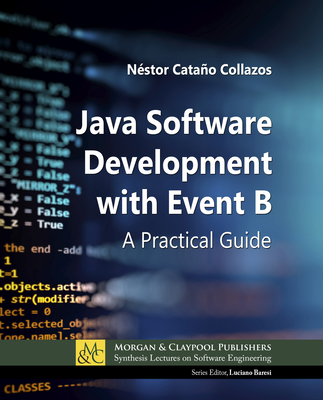A Rigorous Semantics for BPMN 2.0 Process Diagrams
暫譯: BPMN 2.0 流程圖的嚴謹語義學
Felix Kossak, Christa Illibauer, Verena Geist, Jan Kubovy, Christine Natschläger, Thomas Ziebermayr, Theodorich Kopetzky, Bernhard Freudenthaler, Klaus-Dieter Schewe
相關主題
商品描述
This book provides the most complete formal specification of the semantics of the Business Process Model and Notation 2.0 standard (BPMN) available to date, in a style that is easily understandable for a wide range of readers – not only for experts in formal methods, but e.g. also for developers of modeling tools, software architects, or graduate students specializing in business process management.
BPMN – issued by the Object Management Group – is a widely used standard for business process modeling. However, major drawbacks of BPMN include its limited support for organizational modeling, its only implicit expression of modalities, and its lack of integrated user interaction and data modeling. Further, in many cases the syntactical and, in particular, semantic definitions of BPMN are inaccurate, incomplete or inconsistent. The book addresses concrete issues concerning the execution semantics of business processes and provides a formal definition of BPMN process diagrams, which can serve as a sound basis for further extensions, i.e., in the form of horizontal refinements of the core language.
To this end, the Abstract State Machine (ASMs) method is used to formalize the semantics of BPMN. ASMs have demonstrated their value in various domains, e.g. specifying the semantics of programming or modeling languages, verifying the specification of the Java Virtual Machine, or formalizing the ITIL change management process.
This kind of improvement promotes more consistency in the interpretation of comprehensive models, as well as real exchangeability of models between different tools. In the outlook at the end of the book, the authors conclude with proposing extensions that address actor modeling (including an intuitive way to denote permissions and obligations), integration of user-centric views, a refined communication concept, and data integration.
商品描述(中文翻譯)
這本書提供了迄今為止最完整的商業流程模型與標記 2.0 標準(BPMN)語義的正式規範,以易於理解的風格,適合廣泛的讀者群——不僅僅是正式方法的專家,還包括建模工具的開發者、軟體架構師或專攻商業流程管理的研究生。
BPMN 由物件管理集團(Object Management Group)發佈,是一個廣泛使用的商業流程建模標準。然而,BPMN 的主要缺點包括對組織建模的支持有限、對模態的表達僅為隱式,以及缺乏整合的用戶互動和數據建模。此外,在許多情況下,BPMN 的語法和,特別是語義定義不準確、不完整或不一致。本書針對商業流程的執行語義提出具體問題,並提供 BPMN 流程圖的正式定義,這可以作為進一步擴展的可靠基礎,即以核心語言的橫向細化形式進行擴展。
為此,使用抽象狀態機(Abstract State Machine, ASM)方法來形式化 BPMN 的語義。ASM 在各個領域中已顯示出其價值,例如指定程式或建模語言的語義、驗證 Java 虛擬機的規範,或形式化 ITIL 變更管理過程。
這種改進促進了對綜合模型的解釋更具一致性,以及不同工具之間模型的真正可交換性。在書末的展望中,作者提出了針對演員建模(包括直觀表示權限和義務的方式)、用戶中心視圖的整合、精煉的溝通概念和數據整合的擴展建議。












